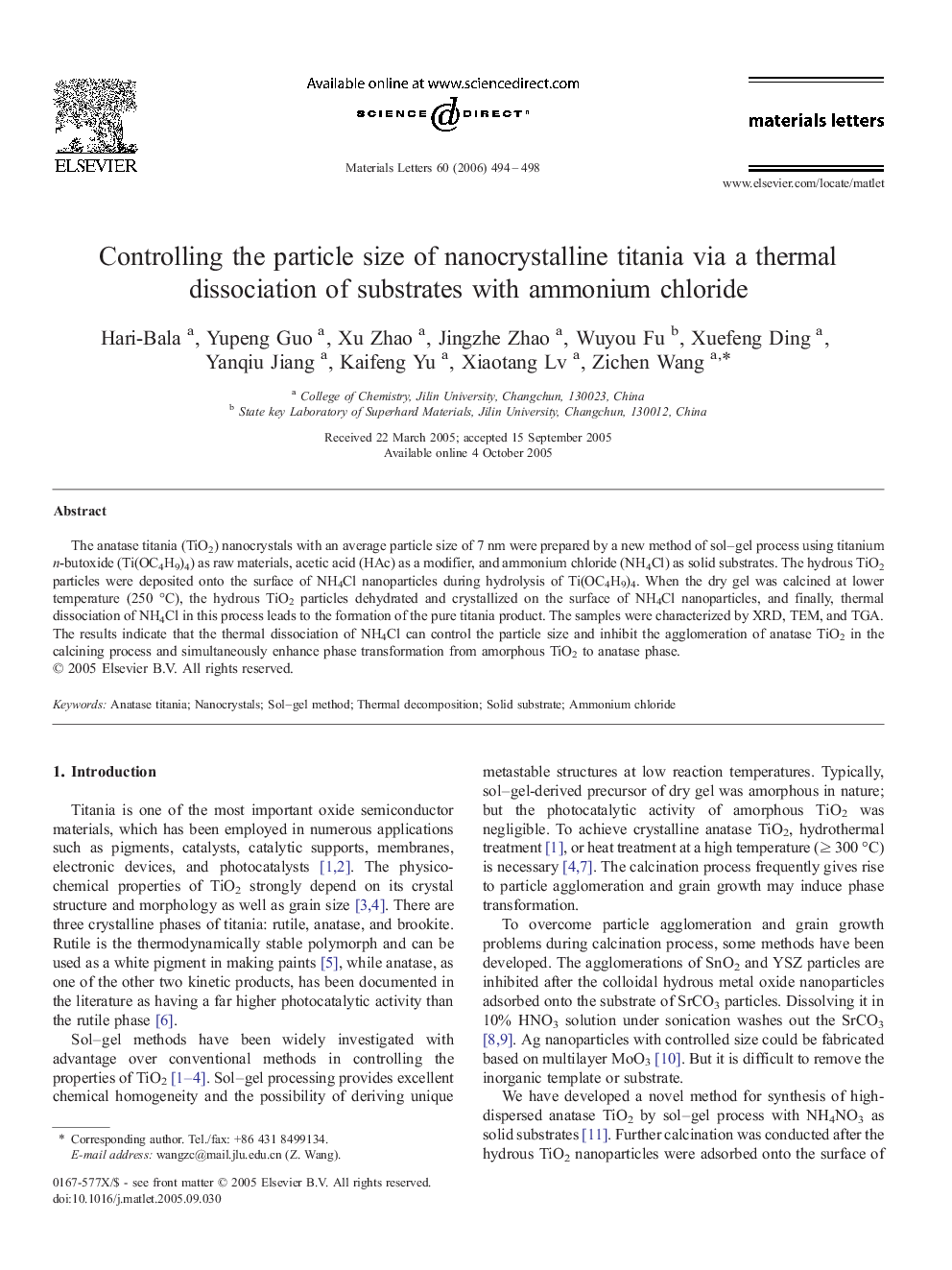| Article ID | Journal | Published Year | Pages | File Type |
|---|---|---|---|---|
| 1653670 | Materials Letters | 2006 | 5 Pages |
The anatase titania (TiO2) nanocrystals with an average particle size of 7 nm were prepared by a new method of sol–gel process using titanium n-butoxide (Ti(OC4H9)4) as raw materials, acetic acid (HAc) as a modifier, and ammonium chloride (NH4Cl) as solid substrates. The hydrous TiO2 particles were deposited onto the surface of NH4Cl nanoparticles during hydrolysis of Ti(OC4H9)4. When the dry gel was calcined at lower temperature (250 °C), the hydrous TiO2 particles dehydrated and crystallized on the surface of NH4Cl nanoparticles, and finally, thermal dissociation of NH4Cl in this process leads to the formation of the pure titania product. The samples were characterized by XRD, TEM, and TGA. The results indicate that the thermal dissociation of NH4Cl can control the particle size and inhibit the agglomeration of anatase TiO2 in the calcining process and simultaneously enhance phase transformation from amorphous TiO2 to anatase phase.
